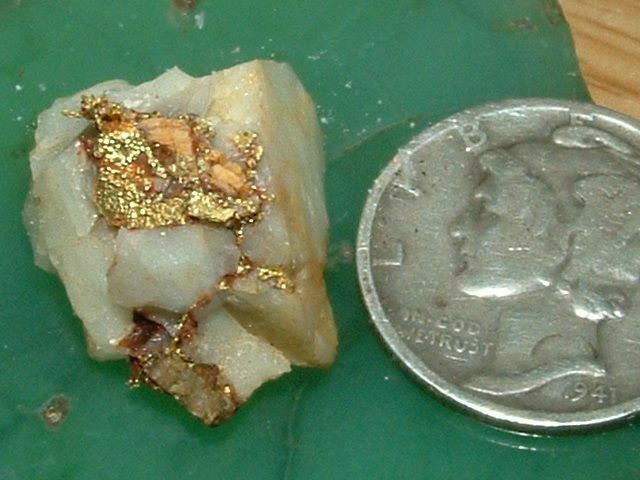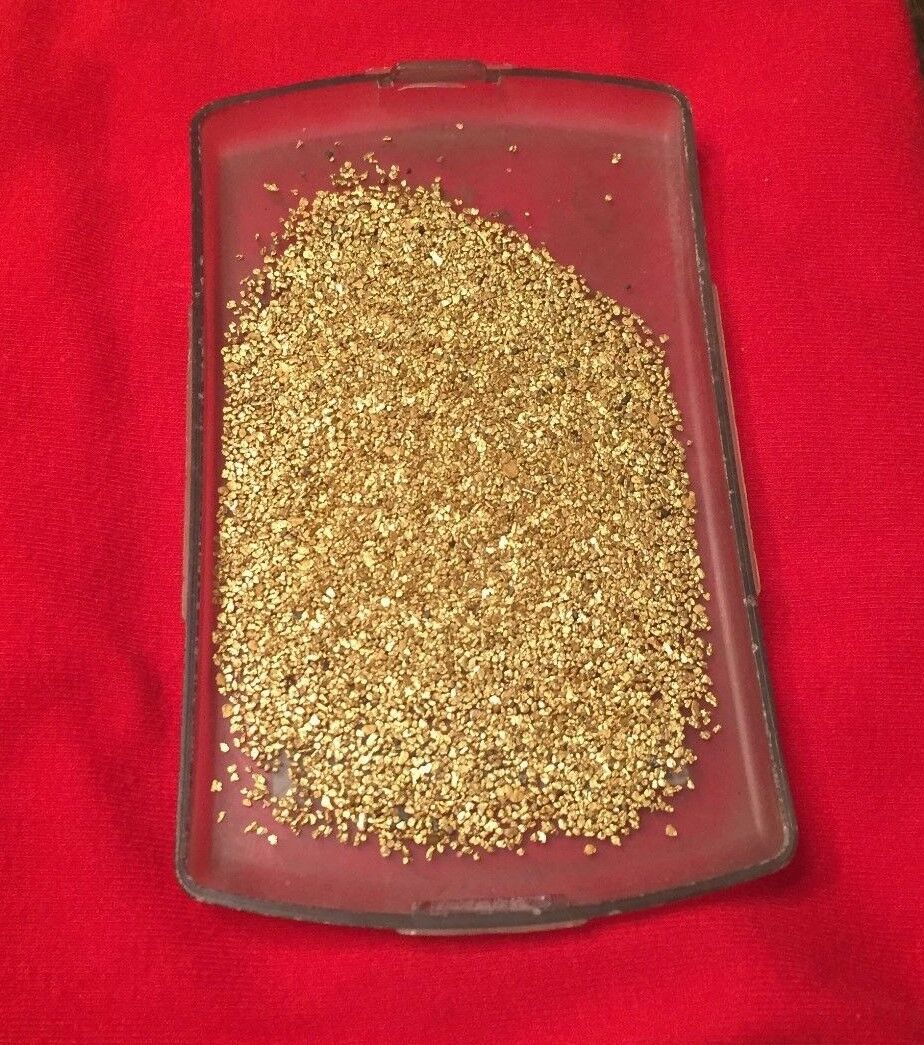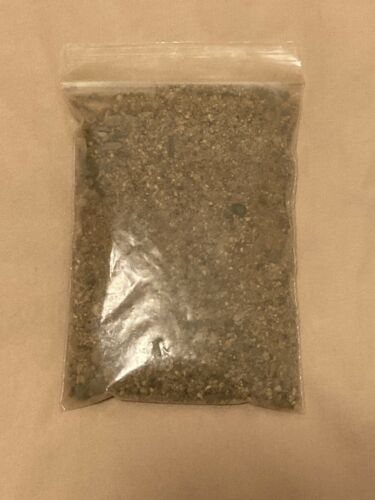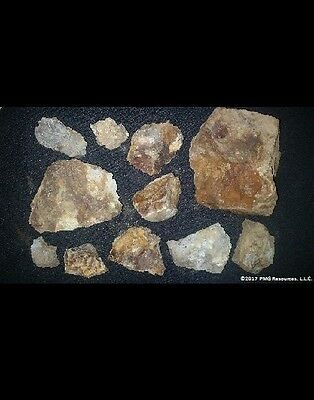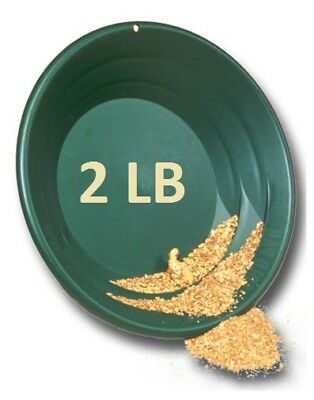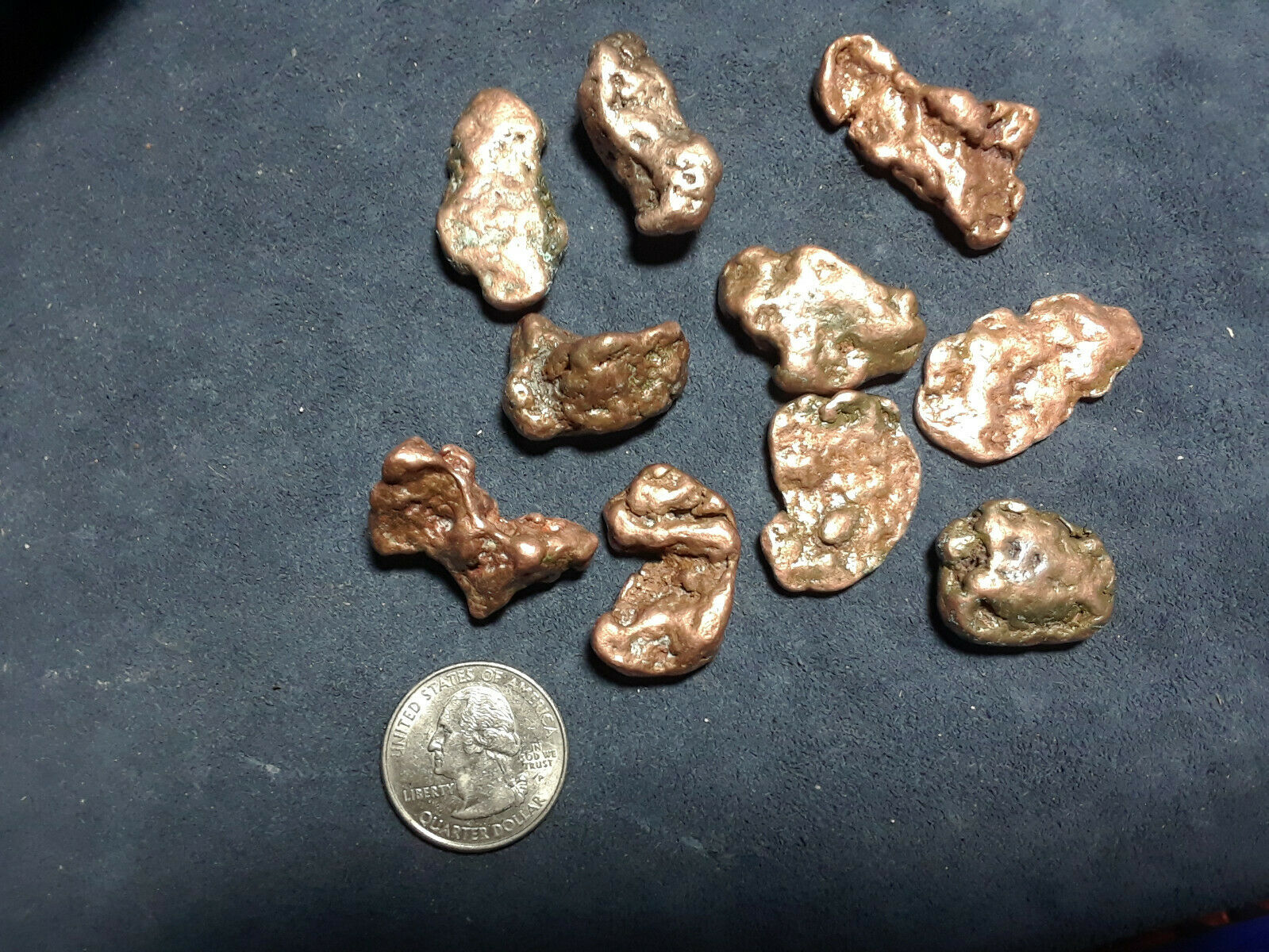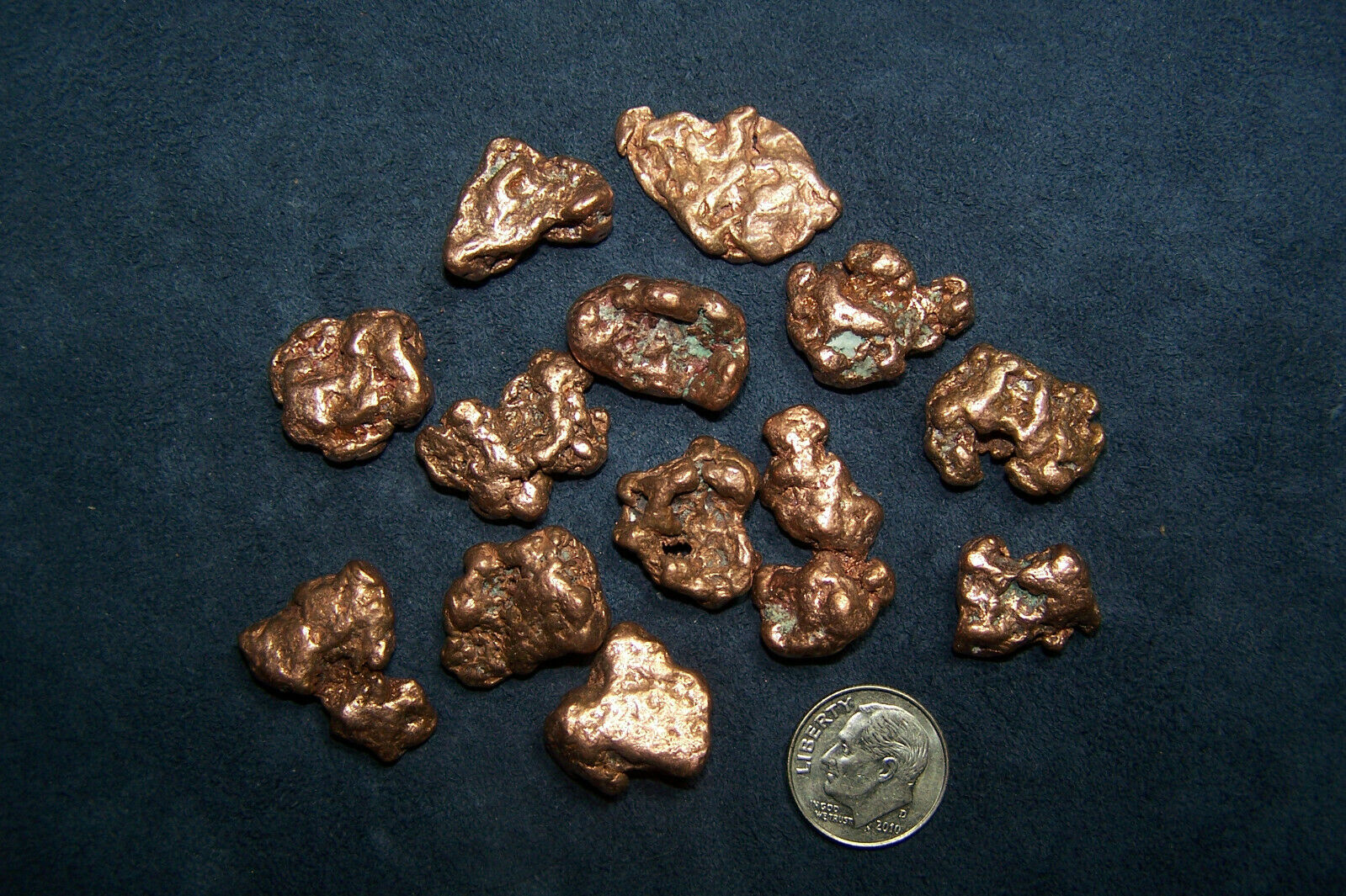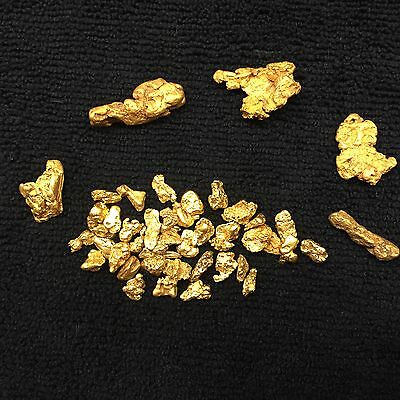-40%
CALIFORNIA GOLD QUARTZ GOLD LEAF SPECIMEN 2.75 GRAM NATURAL
$ 50.16
- Description
- Size Guide
Description
GOLD QUARTZfrom
SIERRA NEVADA MTNS. CALIFORNIA
R
uler is
1/4"
wide (6 mm). U.S. 10 cent coin is 17 mm in diameter.
S
pecimen weight:
2.75
G
ram -
42.5 G
rains
S
ize:
17X13.8X11.8
mm
T
his rich chunk of quartz hails from the Mother Lode mines. It's a strange breed indeed, a mix of quartz and wavy, crinkled-up lustrous gold. This is a natural occurrence. I guarantee it. If you've got a decent VLF detector, this target sounds off. Anyone would
be pleased to find this on a nugget outing. It's very cool seeing high-purity Au poking out of otherwise unimpressive rock. The gold concentration, the purity of the oro, and it's beautiful character accounts for the price. Be advised these are specimens, not bullion. It was my good luck to have acquired a small amount of this ore, so now I get to pass it on.
Finding rock with visible gold in it, when one considers the enormity of planet earth, is tough under the best of conditions. First off, you really need to go where the gold's at. On a walkabout in the Aussie outback, you could be surrounded by a thousand square miles of gold-bearing country. Chances of detecting nuggets within that vastness are reasonably- good, but that's Down Under for you. Conditions are far different in the U.S.'s lower forty eight states; but one thing always holds true. Mining districts where large amounts of gold have been produced in the past are good areas to focus today's search. The more found there, the better one's chances remain. This does not always hold true, but oftimes, it does. Old time prospectors lived in the bush and hunted gold leads pretty much non-stop. The object of their search were pay-streaks in gravel deposits and veins/lenses/pockets in hard country rock. Whenever a gold rush attracted hordes of inexperienced people from far away, the majority of the new seekers were novices, 'cheechakos' who knew little about gold or what comprised good prospecting country. Consequently, in their haste to reach the choicest (Name Brand) diggings being tapped elsewhere, they neglected to test ground on their way to where the mobs were, i.e. in the bustling Boom towns. In some parts of the world, this resulted in many veins, gold-bearing creeks, entire goldfields being completely overlooked.
Back in the 1980s when gold spot averaged around 0 per ounce, most of the miners I knew sold their finds for pretty much whatever they could get for it. If a pawn shop owner was your only option, this might have been 70% of spot or less if the gold was extremely low in purity. An ounce of gold really didn't buy much back in that era, nonetheless prospectors had to make do. In retrospect, I feel for miners of yesteryear. They had to work just as hard, in most cases harder, for an ounce of gold as miners in the field today many of whom have large excavators to move ground with and state-of-the-art metal detectors. But regardless of whether gold is worth , , 0, 00, or 00 per ounce, there's no such thing as an easy ounce.
I sell authentic, naturally-occurring gold quartz specimens with visible gold. These high-grade beauties are hard to find and expensive to obtain. My prices are not based upon the amount of gold contained, but upon the authenticity, rarity, and collectability of a unique specimen.
U.S. SHIPPING - .00
(includes USPS tracking to all U.S. destinations)
INTERNATIONAL CUSTOMERS S&H
.00 (via 1st class)
FAST REFUND OFFERED
(If, for any reason, you're not happy with this item)
I poured through old mining dumps for years looking at orange-yellow-rusty rock through a loupe, but I never found a piece with visible gold.
Hydrothermal solutions carrying gold and silica crystallized into veins of gold quartz. This specimen comes from one of the many vein systems sourcing the immense placer deposits of the Sierra Nevada Mtns, the famed Mother Lode.
Weight Conversions:
15.43 GRAINS = 1 GRAM
31.103 GRAMS = 1 TROY OUNCE
24 GRAINS = 1 PENNYWEIGHT (DWT)
20 DWT = 1 TROY OUNCE
480 GRAINS = 1 TROY OUNCE
S & H
Discounted for combined shipments.
U.S. BUYERS & INTNL.
PAYMENTS
For U.S. buyers: We accept paypal
For intnl. customers: We accept paypal.
Pay securely with
www.paypal
.
Payment must be made within 7 days from close of auction. We ship as soon as funds clear. If you have questions, please ask them before bidding.
REFUNDS
We leave no stones unturned insuring our customers get what they bargained for.
If you're not satisfied with this item, contact me. Then, if the problem can't be fixed, return product within 30 days in 'as purchased' condition for a full refund
GOLD PANNING 101-102
D
uring my 19 year stint in the goldfields, I did a considerable amount of panning. My very first nugget was found panning concentrates left over from another operation. Gold panning is primarily a sampling tool and a way to finish your cons; however, in certain circumstances, a pan can definitely be used as a primary production tool. Panning, in and of itself, is a very cool way to introduce placer gold into your life.
The following is a 'how to' guide I've written. Maybe there's info here you may find useful.
First, add dirt to your pan. This sedimentary material will in all likelihood, be a mixture of sand, gravel, dirt, and/or clay. It might be tightly-packed (consolidated) material or it may be fairly loose (unconsolidated). Vegetation such as moss captures a lot of fine and flour gold, so it's possible you may even find yourself panning moss on occasion. Next, add water.
Submerse your pan underwater completely or fill it up by another means. Your pan is still held horizontally during this stage. Rest your pan on the creek-bottom, ground, or some other flat surface and thoroughly mix the dirt contained with your hands. After larger rocks have been thoroughly cleaned, discard them (unless they're nuggets the size of hens eggs).
Efficient panning can be a tedious process, so I would recommend that in the beginning, consider filling your pan only half full of dirt. Panning too much material hastily is a good way to lose what little gold may have been introduced to your pan. Panning a pan half-full of sediment means you won't have to work so hard to concentrate your material and efficiency should be increased. Also, by reducing the volume of dirt, your slurry can be mixed up a lot easier and much faster than if your pan is heaped full.
Your objective is to break down the dirt, get everything agitated and into solution so that gold, being the heaviest mineral, will sink to the bottom. Disintegrate anything in your pan that breaks apart; that means clay, caliche clods, any kind of concretionary sediments. Vegetation,
like roots and moss, hold inorganic minerals like super fine gold. Moss is famous for catching flour gold. Break it apart!
Then,
Begin to rotate your pan vigorously. Get all the dirt thoroughly mixed up and in motion.
It's not always practical, but if you're panning gold-bearing gravel (real paydirt!), it's not a bad idea to use a catch-basin like a washtub, rubber tub, cattle trough, et al. This way, you can double-check your results. Re-panning all the contents would be extremely slow-going, so for re-checking your results, I recommend re-concentrating this material by running it through a dredge sluice, a regular sluice box, or a rocker box. Using any of these processes speeds up the process considerably. If the weather's hot enough to dry out your dirt, you might even run this material back through a drywasher.
Once you get a feel for panning, increase your speed and force. The more aggressive the motion, the faster your gold will drop. Avoid sloshing any dirt out.
Learning these ropes can take a while, but with a little practice, you'll soon be panning like a pro. I must emphasize all the material must be broken up, dissolved, and put into solution or the gold inside won't settle out. Remember, it could be very fine gold requiring considerable agitation forcing it to sink through the mud, clay, lime, slime, or compacted-vegetable material. In short, it's imperative you mix and shake your loaded pan thoroughly.
Once you get the hang of it, see results, and develop speed, you might feel skookum enough to fill your pan to the rim. From the standpoint of optimizing your recovery, though, even expert panners are better served panning less dirt.
The elimination process: Continue with your circular shuffling of the pan's contents. Gradually start tipping the pan away from you. Lighter material (including larger rocks) now will be closer to the top. This upper portion of the load can be skimmed or scraped over the rim of your slightly tilted pan with a flattened hand. Best to do this underwater. If you think your dirt's throughly shaken, stirred, and dissolved, you should be able to rake a large amount off the top without fear of losing any gold.
As you spin and tip your pan, gold that's settled to the bottom will start crawling upwards into the ejectibles and towards the lip. To nip this in the bud, after you've palmed off a good-sized portion of dirt, return your pan back to the horizontal position again all the while shaking it. Any gold collected should return to the lowest zone in your pan. It's no different then gold tumbling down along bedrock in a creek. Hydraulic forces and gravity cause it to find the deepest cracks and crevices.
Now we're finally down to the nitty-gritty. Repeat the tipping and raking process until you've about half a cup of material. With pan slightly tilted, slowly swirl water over the heavies; this concentrate will most likely consist of iron ore nodules (mainly magnetite and hematite), other high specific gravity minerals, and fine, black sands (more magnetite and hematite). Places like Idaho produce huge amounts of heavy 'ruby sands' which is, basically, garnet.
If you haven't yet seen gold in your pan, pour off excess water until just enough is left to barely cover your concentrates. Swirl the pan stringing out the concentrates. Lighter particles will be washed away first leaving the gold (because it is the heaviest) in the 'tail' of the black sand concentrate.
Continue swirling water in the pan to further clean the concentrates being careful not to lose any gold. Recovering gold by panning takes practice galore, but is a skill which must be mastered if one is to become proficient at prospecting.
Thanks for checking out our digs.
G
old of
E
ldorado
1-14-13
